A group of birdwatchers found a tiny nestling on the ground one warm spring morning. It was crying for food. The bird had fallen out of its nest because of a sibling. People wondered: how long can baby birds survive without eating?
Songbird babies need food many times an hour. Their survival depends on their situation.
Key Takeaways
- Nestlings can usually last up to 24 hours without food if they stay warm.
- Fledglings can last a bit longer without their parents’ care.
- Wrong feeding methods can be deadly. Always call a wildlife expert if a baby bird is in trouble.
- Watching the bird from afar and letting the parents come back is usually best.
- Baby birds need to eat often, sometimes every hour, to live and grow.
Understanding baby birds’ food needs is key. Nestlings depend on their parents for food and warmth. Fledglings leave the nest but still need their parents for food. If they lose their parents, they can’t survive, even if they’re close by.
Understanding the Developmental Stages
Learning about the different stages of baby birds is key. From the downy nestlings to the feathered fledglings, each stage has its own challenges. Each stage needs special care.
Nestlings vs Fledglings
Nestlings are the youngest, still in the nest and can’t fly. They depend on their parents for everything, from food to warmth. They are usually 1 to 14 days old.
Fledglings are young birds that can fly but still need help from their parents. They have grown their flight feathers and are ready to leave the nest. Yet, they still need their parents for food and guidance for a few more weeks.
- Nestlings: Pink skin, closed eyes, unable to fly
- Fledglings: Mix of feathers and down, can leave the nest but still rely on parents
Knowing if a baby bird is a nestling or a fledgling is important. It helps you know what to do if you find one on the ground. Understanding baby bird development and avian growth stages ensures the best care for these young birds.
Signs of Distress in Baby Birds
It’s key to know when baby birds are in trouble. Healthy ones are alert, with open eyes and hungry mouths. But, look out for signs like bleeding, being too cold, or not responding.
WildCare gets many calls about baby birds each year. Fledglings, learning to fly, may be on the ground for weeks. If they’re found there, they could be too cold and need help to stay warm.
- Injured or cold baby birds showing specific symptoms like inability to flutter wings, shivering, or blood showing, require assistance and treatment.
- Cat bites on baby birds often lead to puncture wounds, which can quickly become infected if left untreated, necessitating immediate care at a wildlife hospital.
- Dehydration is common among baby birds during hot summer months, as mentioned by Rita McMahon of the Wild Bird Fund.
Knowing the baby bird health indicators and signs of malnourishment or dehydration in young birds helps save their lives. Quick action can greatly improve their chances of recovery.
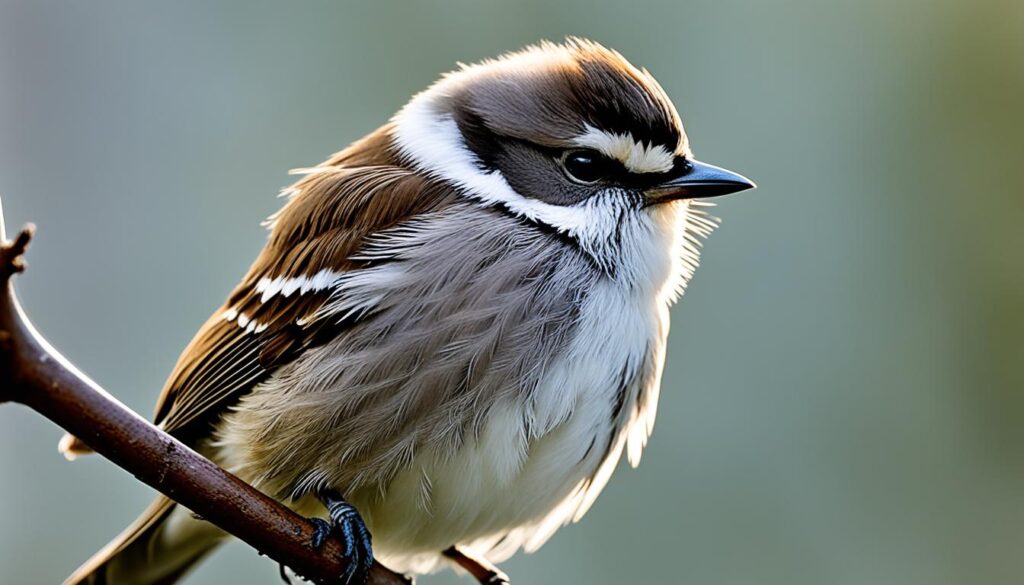
“80% of baby birds that are rescued have actually been kidnapped, according to Melanie Furr of the Atlanta Audubon Society.”
Not all grounded fledglings need to be saved. Healthy ones should stay in the wild. It’s best to talk to a wildlife expert to see if a baby bird needs help or not.
The Importance of Minimal Intervention
When dealing with baby birds, it’s best to leave them alone. This hands-off approach is key to their survival. Trying to “rescue” them can actually be dangerous, as it may lead to improper handling and feeding.
Most baby birds found on the ground are fledglings, fully feathered and learning to fly. Their parents are usually nearby, watching over them and providing care. Birds don’t have a strong sense of smell, so they won’t abandon their young if humans handle them.
- Hatchlings are usually 0-3 days old, while nestlings are typically 3-13 days old.
- Fledglings are birds that are 13-14 days old or older, fully feathered, and able to walk, hop, or flutter.
- Most baby birds found by people are fledglings that have left the nest and are still under their parents’ care.
If a bird looks like it has been attacked, check for injuries. Contact a licensed wildlife rehabilitator if it has been hurt by a cat or another animal. Otherwise, it’s best to leave baby birds alone unless they show signs of distress or injury.
“More than 1 billion birds die annually from window strikes, and outdoor cats, both domestic and feral, are one of the top killers of birds and other native wildlife.”
Too much care can sometimes harm baby birds. Gathering ducklings or goslings can increase their risk of injury or death. It’s best to call licensed rehabilitators for injured or sick birds for proper care and treatment.
Respecting natural processes and following wildlife rehabilitation guidelines helps baby birds the most. Leaving baby birds alone and avoiding human contact is often the best way to ensure their survival.
How Long Can Baby Birds Go Without Food?
Baby birds’ survival depends on their need for food and the care they get from their parents. Nestlings, young birds still in the nest, can last up to 24 hours without food. They have a low metabolism and stay still and warm, saving energy.
For fledglings, young birds that have left the nest but aren’t yet on their own, the situation is tougher. They can last a bit longer without food, but they need it soon. If they don’t eat, they can get dehydrated, starve, and even die.
- Nestlings can survive up to 24 hours without parental feeding, as long as they remain warm.
- Fledglings can go slightly longer without parental care, but they require feedings as soon as possible.
- Prolonged fasting can result in dehydration, starvation, and potentially the death of the baby bird.
The way baby birds eat and their metabolism are key to their survival without parents. Knowing about these stages and signs of trouble can help save baby birds in need.
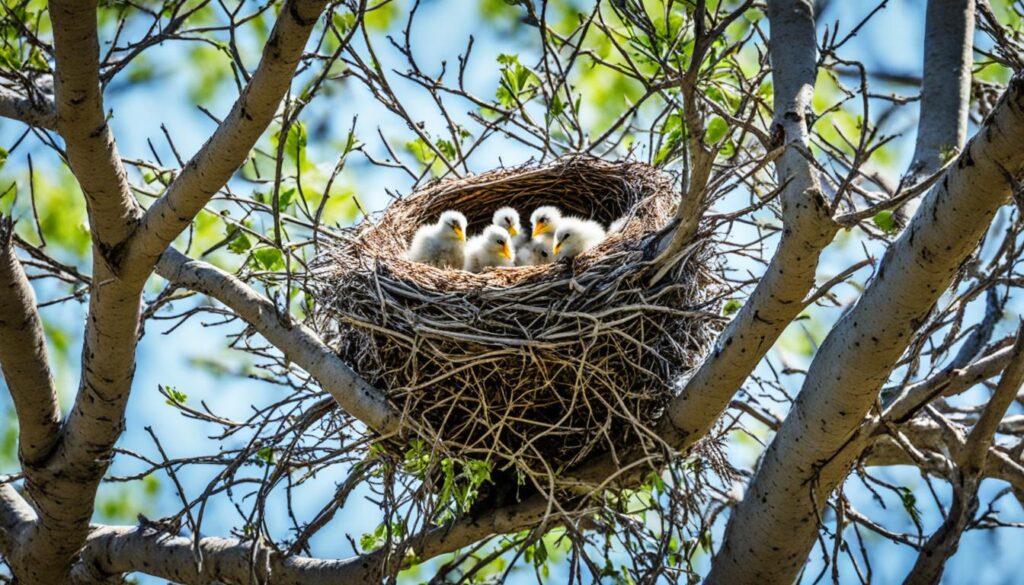
“Caring for baby birds requires a delicate balance of intervention and respect for nature’s course. It is important to seek guidance from wildlife experts to ensure the best possible outcome for these vulnerable creatures.”
Returning Nestlings to the Nest
If you find a nestling on the ground, try to put it back in its original nest. This might mean climbing a tree or reaching a hard spot to get to the nest. Luckily, parent birds usually don’t mind if humans touch their babies. They will keep caring for the nestling if it’s not hurt.
Locating and Identifying the Nest
Finding the nest can be tough. Nest identification and nest accessibility are key. Look around the area for the nest, which might be in a tree, bush, or hidden spot. If you can’t get to the nest, making a fake nest nearby might help the parents feed the baby.
Many think birds will leave their babies if humans touch them. But, most parent birds are strong and will keep caring for their babies if they’re okay. Putting the baby back in its nest helps it survive and lets the parents do their job.
“The survival of baby birds depends on prompt and appropriate intervention. Returning nestlings to their original nest, if feasible, is the optimal course of action.”
Observing Fledglings in the Wild
When young birds leave the nest, they start learning to fly and find food on their own. It’s important to know how they behave and how independent they are. Fledglings, birds that have left the nest but aren’t yet fully on their own, might seem distressed. They are just learning.
Watching fledglings in the wild from a safe distance is key. This lets you see if their parents are still taking care of them. If the fledgling looks okay and the parents are around, it’s best to leave baby birds alone. This lets them learn naturally without harm from humans.
About 80% of baby birds taken to rehab centers were not really in danger. Only around 30% of baby songbirds make it to their first year. By watching from afar, you help keep these young birds safe and let their parents care for them.
“It’s important to remember that the vast majority of baby birds found on the ground are not actually in need of rescue. They are simply going through the natural process of learning to fly and forage, with their parents still providing care.”
Patience and watching closely are crucial when looking at fledgling behavior and juvenile bird independence. Letting nature do its thing, with little human help, is the best way to help these young birds survive and thrive.
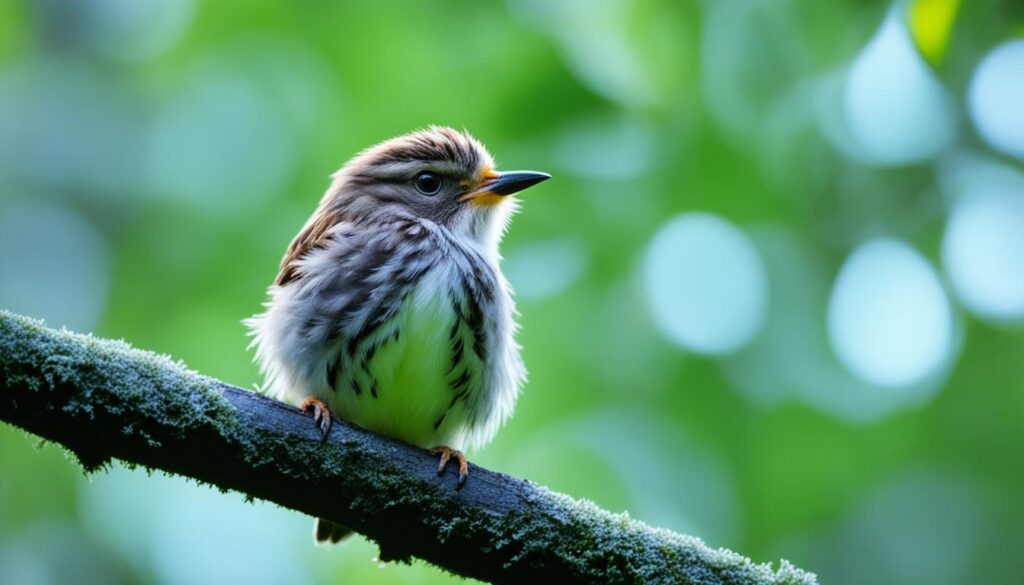
Sometimes, you might need to help a fledgling if it’s hurt or in danger. But this is rare. Knowing how birds naturally care for their young helps these young birds grow and become independent.
When to Contact a Wildlife Rehabilitator
Deciding to help baby birds can be tricky. You should only call a wildlife rehabilitator if the bird is hurt or if it has no parents around.
Rehabilitators know how to care for injured or orphaned wild birds. Before helping, watch from afar to see if the parents are still caring for the baby. This way, you avoid causing more harm.
- Nestlings, baby birds with no feathers or only a few, have a limited survival time outside the nest.
- Fledglings, baby birds with most of their feathers, leave the nest before they can fly. Healthy fledglings can often be returned to their parents if found on the ground.
- Injured baby birds should be quickly directed to local wildlife rescue centers or vets.
Learn about baby bird rescue guidelines and distress in baby birds to make the right choice for their health. Calling a wildlife rehabilitator is best when you need orphaned nestling assistance or fledgling rehabilitation.
“The Wildlife Center of Texas in Houston treats all injured, sick, or orphaned native Texas wildlife species without turning away any animal in need.”
The wildlife rescue protocol focuses on the birds’ health and safety. By only helping when really needed, we help baby birds the most.
Safe Transportation of Baby Birds
When you find an injured or orphaned baby bird, it’s key to move it safely and with care. The bird’s well-being is most important during this process. By taking a few steps, you can help the baby bird survive until it gets to a licensed wildlife rehabilitator.
Start by putting the baby bird in a small, well-ventilated box like a shoebox or cardboard box. Line it with soft things like paper towels or a cloth. This keeps the bird warm and reduces stress. Don’t touch the bird directly, as it can get very stressed.
- Use a baby bird container to transport the animal.
- Keep the bird warm during the journey.
- Minimize stress by limiting handling and disturbance.
After putting the baby bird in the container, keep it away from loud noises, people, and pets. This helps reduce the bird’s stress levels and boosts its survival chances.
“Prompt and proper transportation of injured or orphaned baby birds to a licensed wildlife rehabilitator is crucial for their wellbeing and recovery.”
Finally, take the baby bird to the nearest licensed wildlife rehabilitator quickly. These experts know how to give the bird the care it needs. By doing this, you help ensure the safe transportation of baby birds and raise their chances of getting better.
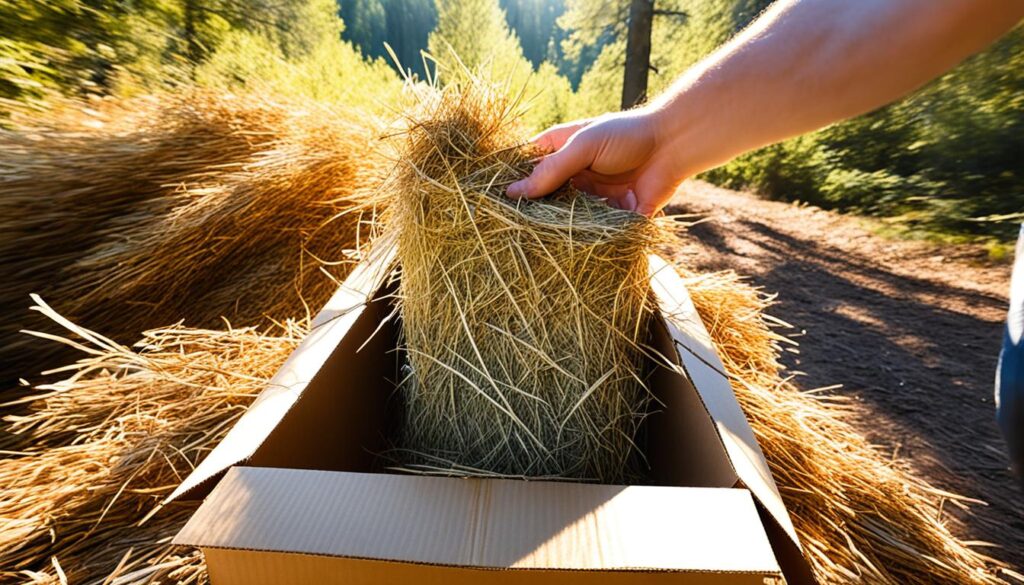
The Role of Wildlife Rehabilitators
Wildlife rehabilitators are the go-to people for helping injured, orphaned, or distressed wild birds. They have the right training, licenses, and tools to give these birds the medical care they need. They feed and care for baby birds and get them ready to live in the wild again.
Expertise and Licensing
Rehabilitators get a lot of training and need the right licenses to work. They know how to feed and care for baby birds right. This is key because mistakes can harm the bird’s recovery and its chance of living in the wild again.
Even though they don’t get paid, their work is priceless. By giving time or resources to wildlife rehabilitation centers, people help keep these places running. They also support the professional avian care for baby bird treatment and release protocols.
“Rehabilitators play a crucial role in supporting healthy wild bird populations. Donating time or resources to these organizations can help ensure their continued operation.”
Licensed bird caregivers know what different birds need. They use special techniques and rehabilitation funding to help birds recover. This gives them a good chance of going back to the wild.
Preventing Future Emergencies
The best way to help baby birds is to stop emergencies before they start. This means taking steps to protect nesting birds, create safe habitats, and educate the public on why to leave baby birds alone. Knowing when to call a wildlife rehabilitator is also crucial.
One important action is to avoid disturbing nests and remove hazards like loose netting. Safe nesting spots, like birdhouses or well-placed plants, help protect nesting birds. This reduces the need for rescues.
Also, teaching the public about baby birds’ natural growth and the dangers of rescuing them can lower the number of unnecessary rescues. People can learn to leave fledglings alone and know when to call a rehabilitator. This helps in avoiding baby bird rescues and helps these birds survive.
“By being proactive, we can minimize the need for emergency bird rescues and support the overall health of local bird populations.”
By protecting habitats, spreading awareness, and being responsible, we can create safe habitats for birds. This also helps prevent future emergencies that could harm them.
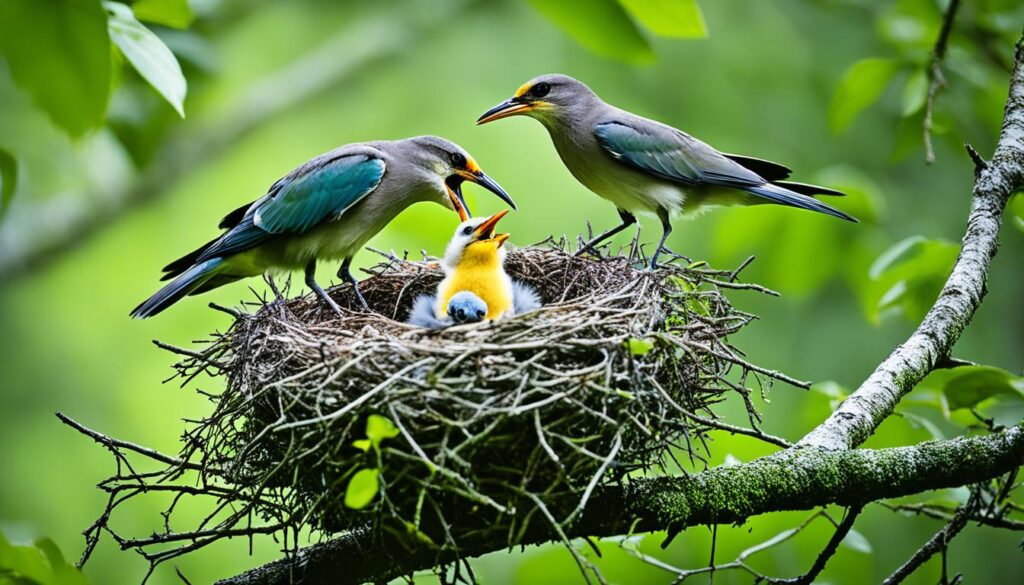
Respecting Nature’s Course
We must learn to accept natural mortality and let nature take its course. It’s hard to see a baby bird in trouble, but we need to understand avian life cycles and embrace non-intervention policies when right.
Trying too hard to save baby birds can sometimes hurt them more. Human actions can mess up the natural ways birds care for their young and survive. By respecting the natural order and only helping when really needed, we help our bird friends the most.
“Letting nature take its course is the best way to support the long-term resilience of wildlife populations.”
As wildlife stewards, we must accept that some birds won’t make it. This means we shouldn’t try to change nature’s plan. Instead, we should watch from afar to learn about the complex ways birds survive and thrive.
By choosing not to interfere, we make sure our actions don’t upset nature’s balance. This way, we don’t accidentally hurt the very birds we’re trying to protect.
Legal Considerations
Migratory Bird Treaty Act
As bird lovers, knowing the laws about caring for wild birds is key. In the U.S., the Migratory Bird Treaty Act is crucial for protecting our feathered friends. It makes it illegal to capture, kill, or keep migratory birds without the right license.
This means you can’t try to fix baby birds by yourself. Only licensed wildlife rehabbers can care for injured or lost wild birds. Breaking these laws can lead to big fines.
These laws help keep wild birds safe and protect their numbers. They make sure birds get the right care from experts. By following the Migratory Bird Treaty Act and working with licensed rehabbers, we help protect our bird friends.
“The biblical maxim ‘man cannot live by bread alone’ was referenced in relation to the importance of keeping baby birds clean and comfortable, not just feeding them.”
It’s important to know the legal rules for taking care of wild birds. Having the right permits is key. Getting advice from wildlife experts and following the Migratory Bird Treaty Act helps us protect these birds and obey the law.
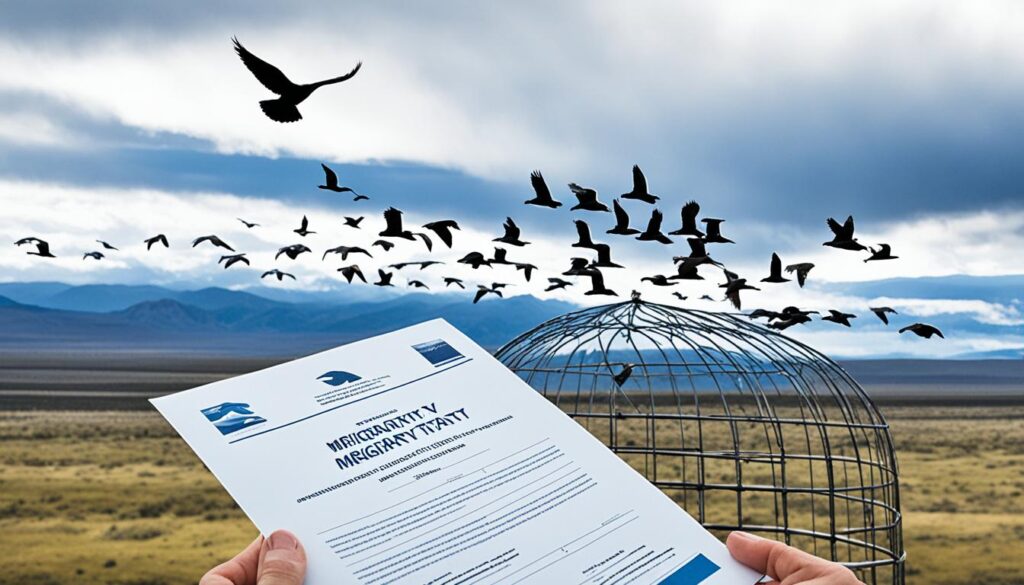
Supporting Wildlife Rehabilitation Efforts
Wildlife rehabilitation centers are key to keeping wild bird populations healthy. They give care and treatment to baby birds in trouble, helping them go back to the wild. But, these centers often have small budgets and need our help to keep going.
Donating is a great way to help these centers. Whether it’s money or supplies, your gifts can really help. Volunteering at a center is also a great choice. You get to help and learn while making a difference for local birds.
Spreading the word about wildlife rehab is also important. Teaching others about baby birds and why they need help can make a big difference. It helps make sure these centers get the support they need to keep going.
“The work of wildlife rehabilitation centers is crucial for protecting the health and resilience of our local bird populations. By supporting these efforts, we can make a real difference in the lives of baby birds and ensure they have the best chance of thriving in the wild.”
Donating, volunteering, and speaking up for wildlife rehab helps these important places. Together, we can make sure they have what they need to keep helping birds. This way, we help the next generation of wild birds.
Conclusion
It’s usually best to let baby birds be and let their parents take care of them. Unless the bird is hurt or alone, don’t try to feed or save it. Only experts in wildlife care know how to help these birds properly.
Knowing how baby birds grow and respecting nature helps us support their well-being. We should watch how much they eat and their behavior. If we don’t do this right, it can hurt them a lot.
Helping baby birds means understanding the need for wildlife rehabilitation. If a bird is alone or hurt, a licensed expert can help it. By acting wisely, we help protect the birds that live around us.
FAQ
How long can baby birds go without food?
Nestlings, very young birds still in the nest, can last up to 24 hours without food. Fledglings, young birds that have left the nest but aren’t yet independent, can last a bit longer. Yet, it’s crucial to feed them as soon as possible. Prolonged fasting can lead to dehydration, starvation, and death.
What are the different developmental stages of baby birds?
Nestlings are very young birds still in the nest, unable to fly. They have little to no feathers and need constant care. Fledglings are young birds with flight feathers, ready to leave the nest. They still need supervision and feeding for a few more weeks.
What are the signs of distress in a baby bird?
Signs of distress in a baby bird include bleeding, being cold, closed or half-closed eyes, exhaustion, droopiness, and lack of response. Healthy nestlings and fledglings should be alert, with open eyes and show hunger by gaping or chirping.
Why is it important to minimize intervention with baby birds?
Trying to “rescue” a baby bird can sometimes harm it, especially if handled or fed incorrectly. It’s usually best to leave it alone and watch from afar. Baby birds have a better chance of survival with their natural parents.
How can I safely return a nestling to its nest?
If you find a nestling on the ground, try to put it back in its nest if you can. This means finding the nest, often in a tree or hard spot, and gently placing the baby back inside. It’s a myth that parent birds will reject their young if humans touch them. As long as the nestling is okay, the parents will likely keep caring for it.
When should I contact a wildlife rehabilitator?
Contact a wildlife rehabilitator if the baby bird is injured or seems truly orphaned with no parents around. Rehabilitators have the skills and resources to help injured or orphaned wild birds.
How can I safely transport a baby bird to a wildlife rehabilitator?
If you need to take a baby bird to a rehabilitator, do it safely and with care. Put the bird in a small, well-ventilated box like a shoebox or cardboard box, lined with soft stuff like paper towels or cloth. Keep it warm but not too hot, and away from noise, people, and pets during the trip.
What is the role of wildlife rehabilitators?
Wildlife rehabilitators are trained and licensed to give the right medical care and rehabilitation to baby birds. They know how to feed and care for nestlings and fledglings, preparing them for a successful return to the wild.
What can I do to help prevent baby bird emergencies?
To help baby birds, prevent emergencies by protecting their nests and removing dangers. Offer safe places for them to nest. Teach others about the importance of leaving baby birds alone and knowing when to call a rehabilitator to reduce unnecessary interventions.
What are the legal considerations surrounding the care of wild birds?
In the U.S., the Migratory Bird Treaty Act makes it illegal to capture, kill, or have migratory birds without a license. This means people can’t usually try to care for baby birds on their own. Only licensed wildlife rehabilitators can legally help injured, orphaned, or distressed wild birds.
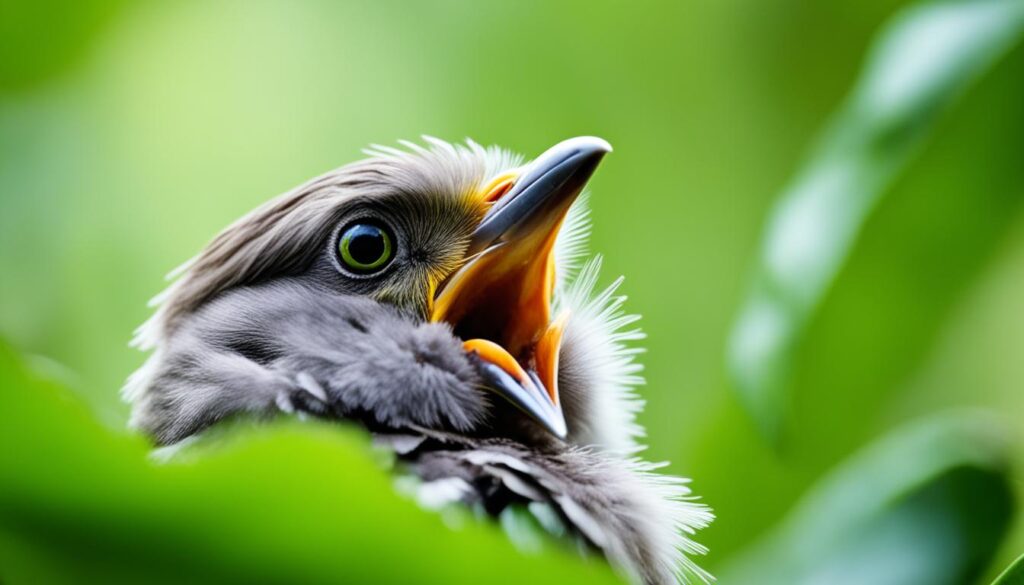

покупка аккаунтов маркетплейс аккаунтов
магазин аккаунтов маркетплейс аккаунтов
заработок на аккаунтах магазин аккаунтов
купить аккаунт с прокачкой продажа аккаунтов
купить аккаунт безопасная сделка аккаунтов
магазин аккаунтов площадка для продажи аккаунтов
аккаунт для рекламы магазин аккаунтов социальных сетей
покупка аккаунтов https://birzha-accauntov.ru/
покупка аккаунтов купить аккаунт
маркетплейс аккаунтов https://marketplace-akkauntov-top.ru/
маркетплейс аккаунтов соцсетей магазин аккаунтов социальных сетей
покупка аккаунтов https://ploshadka-prodazha-akkauntov.ru/
платформа для покупки аккаунтов https://prodat-akkaunt-online.ru/
заработок на аккаунтах купить аккаунт
безопасная сделка аккаунтов магазин аккаунтов
Social media account marketplace Buy and Sell Accounts
Profitable Account Sales Find Accounts for Sale
Account trading platform https://socialaccountsmarket2025.com
Account Catalog https://buyaccountsmarketplace.com
Buy accounts Accounts marketplace
Account marketplace Buy and Sell Accounts
Verified Accounts for Sale Website for Buying Accounts
Database of Accounts for Sale Verified Accounts for Sale
Accounts for Sale Account Buying Service
Website for Selling Accounts Purchase Ready-Made Accounts
account exchange service account catalog
account trading platform account purchase
account selling service account purchase
profitable account sales account market
account exchange account trading platform
online account store sell accounts
buy and sell accounts account trading platform
account acquisition secure account sales
account selling platform verified accounts for sale
sell pre-made account account exchange
gaming account marketplace account exchange
account selling service online account store
buy pre-made account sell accounts
database of accounts for sale social-accounts.org
gaming account marketplace verified accounts for sale
account selling platform accounts marketplace
gaming account marketplace secure account sales
social media account marketplace account trading
account market accounts marketplace
account purchase https://account-buy.org/
gaming account marketplace buy accounts
account trading platform account marketplace
purchase ready-made accounts account buying platform
account buying platform account purchase
account selling service account exchange service
account exchange service find accounts for sale
account marketplace account catalog
account purchase verified accounts for sale
sell account https://accounts-offer.org/
buy pre-made account https://accounts-marketplace.xyz
database of accounts for sale https://buy-best-accounts.org/
account market https://social-accounts-marketplaces.live/
sell pre-made account https://accounts-marketplace.live
buy accounts account market
account trading platform https://buy-accounts.space
account market https://buy-accounts-shop.pro
account trading service https://buy-accounts.live
database of accounts for sale account market
account exchange https://accounts-marketplace.online
verified accounts for sale https://accounts-marketplace-best.pro
продажа аккаунтов https://akkaunty-na-prodazhu.pro/
продать аккаунт https://rynok-akkauntov.top/
продажа аккаунтов магазины аккаунтов
продажа аккаунтов akkaunt-magazin.online
маркетплейс аккаунтов akkaunty-market.live
площадка для продажи аккаунтов kupit-akkaunty-market.xyz
продать аккаунт akkaunty-optom.live
магазин аккаунтов https://online-akkaunty-magazin.xyz
маркетплейс аккаунтов https://akkaunty-dlya-prodazhi.pro
продать аккаунт kupit-akkaunt.online
buy old facebook account for ads buy fb ads account
buy facebook advertising accounts https://buy-ad-accounts.click
buy accounts facebook buy facebook ads accounts
facebook ad accounts for sale https://buy-ads-account.click
buy facebook account for ads https://ad-account-buy.top
buying facebook ad account buy facebook profiles
buy facebook account for ads https://ad-account-for-sale.top
Эта обзорная заметка содержит ключевые моменты и факты по актуальным вопросам. Она поможет читателям быстро ориентироваться в теме и узнать о самых важных аспектах сегодня. Получите краткий курс по современной информации и оставайтесь в курсе событий!
Получить больше информации – https://medalkoblog.ru/
buy facebook ads manager buy accounts facebook
facebook ads account buy buying facebook ad account
buy aged google ads accounts https://buy-ads-account.top
google ads account buy https://buy-ads-accounts.click
fb accounts for sale https://buy-accounts.click
google ads account seller https://ads-account-for-sale.top
buy google ad account buy adwords account
google ads agency accounts https://buy-ads-invoice-account.top
google ads accounts https://buy-account-ads.work
google ads account for sale https://buy-ads-agency-account.top